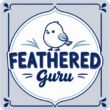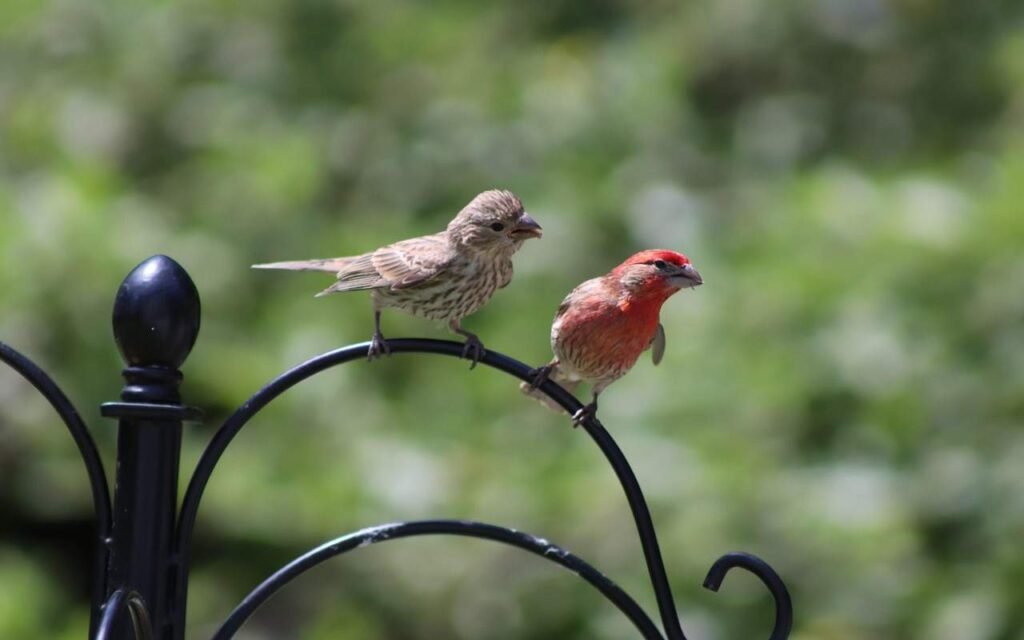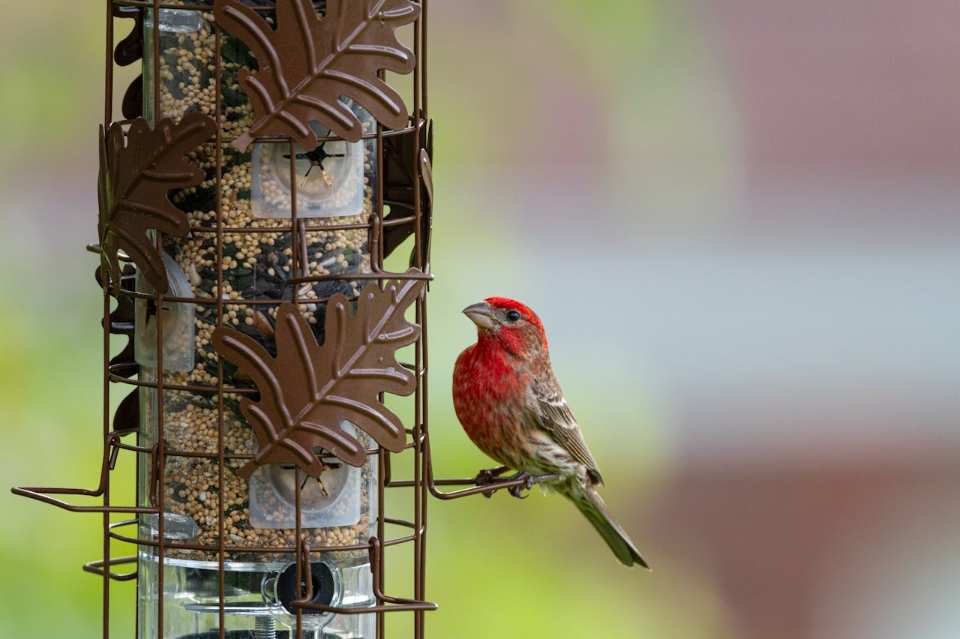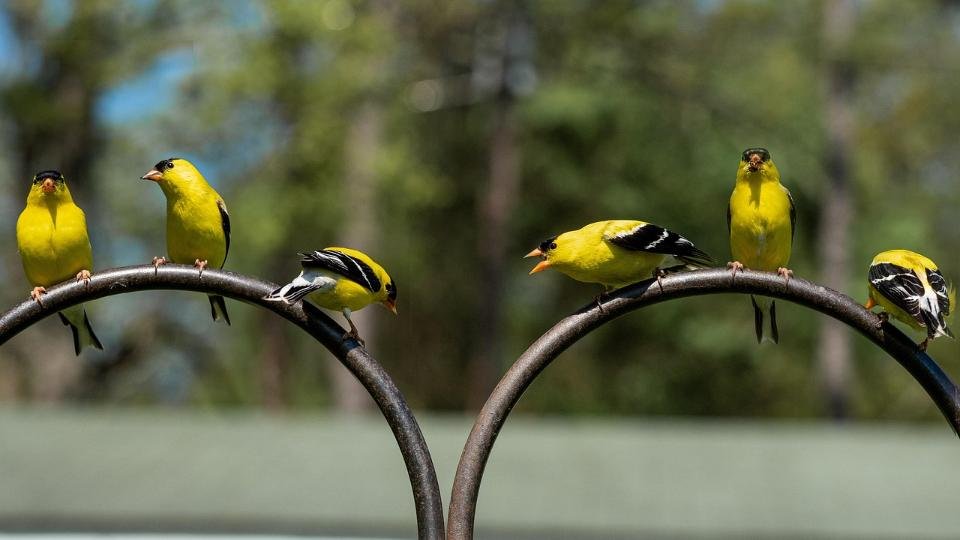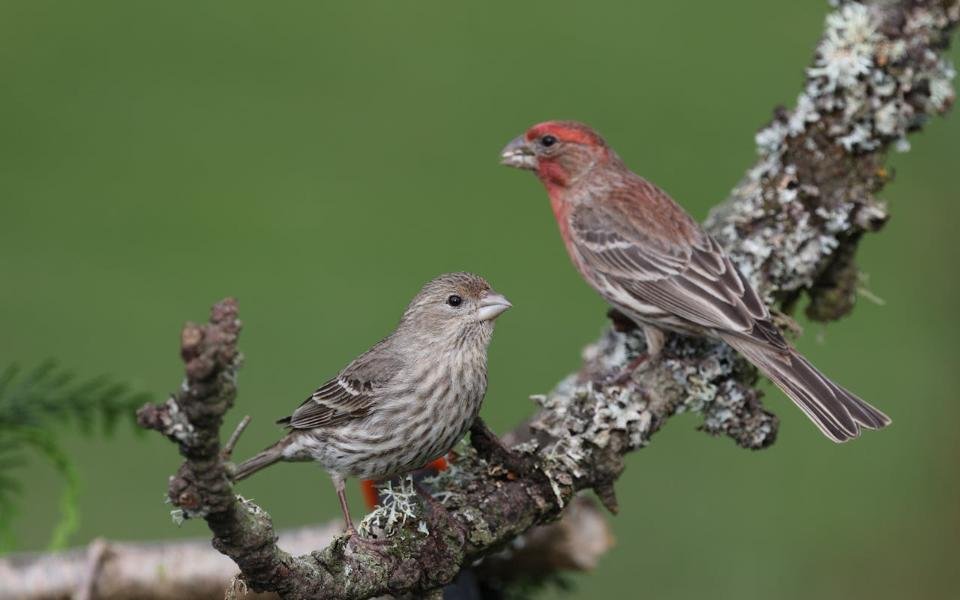The first goldfinch that landed in my yard literally stopped me mid-coffee sip 😊. That brilliant yellow plumage against my green bushes looked like someone had Photoshopped a highlighter into real life. If you’re wondering how to attract finches to your yard, trust me, it’s not as tricky as it seems. I stood there like an idiot, coffee getting cold, just watching this tiny bird work my feeder. That was five years ago, and I’ve been obsessed with attracting finches ever since.
Getting finches to visit isn’t rocket science, but it does require understanding what these picky little birds actually want. Spoiler alert: it’s not the same food that attracts cardinals or sparrows. Let me walk you through everything I’ve learned about turning your yard into finch paradise.
Why Finches Are Different (And Why That Matters)
Finches aren’t like most backyard birds. While many songbirds are opportunistic eaters that will happily grab whatever you put out, finches have very particular tastes. Their beaks are built for one thing: seeds. Goldfinches, House Finches, and Purple Finches all show up at feeders, but each has slightly different preferences. Understanding those quirks makes attracting them a lot easier.
According to the Cornell Lab of Ornithology, American Goldfinches rely almost entirely on seeds, especially during breeding season, while House Finches mix in buds, fruits, and other plant materials.
Here’s what surprised me when I first got into backyard birdwatching: finches can take weeks, even months, to warm up to new feeders. They’re cautious, methodical, and, honestly, a little food-snobby. But once they decide your setup passes the test? They’ll invite the whole extended family.
The Seed That Changes Everything
Let’s talk about nyjer seed for finches, because this tiny black seed is absolute finch catnip. According to BirdWatchingDaily, nyjer (thistle) seed is one of the most effective foods for attracting goldfinches, especially during breeding season. Also called thistle seed (though it’s not actually from thistles), nyjer is the gold standard for attracting goldfinches and other finch species.
Why Nyjer Works So Well
Nyjer seeds are tiny, oil-rich, and packed with calories. Finches have specialized beaks that crack these seeds efficiently, while larger birds struggle with them. This natural selection pressure means your finch feeders don’t get mobbed by grackles or starlings.
I remember buying my first bag of nyjer and thinking, “These seeds are expensive and look like pepper. This better work.” Spoiler: it worked spectacularly. Within three weeks, I had goldfinches fighting for space on my feeder.
Nyjer stays fresh for about three months if stored properly. Keep it in a cool, dry place, preferably in an airtight container. Finches absolutely refuse stale seed, and honestly, I respect that level of quality control.
Other Seeds Finches Actually Eat
While nyjer is king, finches also enjoy sunflower chips (hulled sunflower seeds). House finches especially love these because they don’t have to work as hard cracking shells. Purple finches will eat both nyjer and sunflower chips happily.
Some finches also eat millet, though goldfinches tend to ignore it. If you’re trying to attract multiple finch species, a mix of nyjer and sunflower chips covers most bases. IMO, buying separate seeds and mixing them yourself gives better value than pre-made blends.
I tested this theory last spring by running two identical feeders with different seeds. The nyjer feeder had goldfinches lined up like it was a Black Friday sale. The millet feeder? Crickets. Well, sparrows actually, but you get the point.
Choosing the Right Finch Feeders
Not all feeders work for finches. These birds need specific designs that accommodate their feeding style and small size. Getting the feeder wrong means wasting money and wondering why finches ignore your yard.
Tube Feeders with Small Ports
Tube feeders designed specifically for nyjer have tiny feeding ports. These ports are perfectly sized for finch beaks but too small for larger birds. According to Perky Pet, tube feeders with small ports are ideal for finches because the tiny openings suit their beaks and prevent larger birds from dominating the feeder. This design keeps bullies away and ensures your expensive nyjer goes to its intended audience.
I use metal tube feeders because squirrels destroyed my plastic ones in approximately four days. Learn from my expensive mistakes and invest in quality from the start.
Make sure your tube feeder has good drainage. Wet nyjer clumps together and spoils quickly. Finches won’t touch spoiled seed, so drainage holes are non-negotiable.
Thistle Sock Feeders
Thistle socks are mesh bags that hold nyjer seed. Finches cling to the mesh and extract seeds through the fabric. These feeders are cheap, easy to fill, and finches genuinely love them.
The downside? Thistle socks wear out quickly, especially if squirrels discover them. I replace mine every season. They’re inexpensive enough that frequent replacement doesn’t hurt the budget.
Thistle socks also get gross when wet. If rain is coming, bring them inside or accept that you’ll need to replace the seed. Moldy seed isn’t just wasted money; it can make birds sick.
Finch Feeding Stations
Finch feeding stations are tube feeders with perches above the feeding ports instead of below. This design forces birds to feed while hanging upside down or perching above their food. Goldfinches handle this easily, while many other birds can’t manage the acrobatics.
I added one of these to my yard last year, and the goldfinch traffic doubled. Turns out they appreciate feeders that play to their strengths. Who knew birds had egos?
What Doesn’t Work
Platform feeders don’t work well for finches. The exposed design makes them nervous, and the seed gets contaminated quickly. Hopper feeders are hit-or-miss. Some finches use them, but they’re not ideal for nyjer seed specifically.
I wasted money on a fancy hopper feeder before learning this. It sat empty for months while finches mobbed the tube feeder ten feet away. Sometimes birds are smarter than humans.
Best Feeder Placement for Finches
You can have the perfect thistle feeder filled with premium nyjer, but terrible placement ruins everything. Location matters enormously when you’re trying to attract goldfinches and other finch species.
Height and Visibility
Finches prefer feeders mounted 4-8 feet high in relatively open areas. They want clear sightlines to spot predators but also need nearby cover for quick escapes. Finding that balance is key.
I mounted my first finch feeder right next to a dense bush. Zero finches visited for six weeks. I moved it fifteen feet into the open (but still near trees), and finches appeared within days. Apparently, they’re not fans of ambush-friendly locations.
Near Natural Perches
Finches like staging areas near feeders. Trees, shrubs, or even tall perennials give them places to wait, observe, and socialize before approaching feeders. Think of these perches as bird parking lots.
I have a dead sunflower stalk near my feeders that I left standing intentionally. Finches use it constantly, perching there between feeding sessions. It’s become prime real estate in my yard’s bird economy.
Multiple Feeder Strategy
Finches are social but competitive. Multiple feeders spread throughout your yard reduce aggression and accommodate more birds. I run three finch feeders in different areas, and all three stay busy during peak season.
This strategy also helps during seasonal bird feeding. When migration brings extra finches through your area, multiple feeders prevent overcrowding and territorial disputes.
Water Sources: The Secret Weapon
Everyone obsesses over feeders, but water attracts finches just as effectively. According to All About Birds, birdbaths and shallow water sources are just as critical as feeders for attracting backyard birds, including finches. These birds need water for drinking and bathing, and a reliable source makes your yard significantly more appealing.
I added a simple birdbath two years ago, and finch visits increased noticeably. They drink, bathe, and socialize around the water like it’s their private spa. Watching goldfinches splash around is ridiculously entertaining.
Keep water fresh and clean. Finches are picky about water quality, refusing anything that looks sketchy. Change water every few days, and scrub the bath weekly. During winter, consider a heated birdbath so water stays liquid when temperatures drop.
Finches especially love shallow water. If your birdbath is deep, add rocks or a platform to create shallow areas. Finches won’t wade into deep water, but they’ll happily bathe in half an inch.
Creating Finch-Friendly Habitat
Feeders and water are great, but habitat improvements take your yard from okay to exceptional. Finches need more than handouts; they need actual living space.
Native Plants That Finches Love
Finches evolved eating native plant seeds. Adding these plants to your landscape provides natural food sources year-round. According to the National Wildlife Federation, planting native flowers provides essential seed sources for finches while also supporting local insects that many birds feed to their young. I planted purple coneflowers, black-eyed Susans, and native sunflowers. Finches devour the seeds enthusiastically.
Leave flower heads standing through fall and winter instead of deadheading them. Those dried seed heads feed finches when natural food becomes scarce. My neighbors think my “messy” garden looks terrible, but finches think it’s perfect 🙂
Native plants also attract insects that some finch species eat during breeding season. House finches especially supplement their diet with insects when raising chicks. Creating a complete ecosystem benefits birds far more than feeders alone.
Trees and Shrubs for Cover
Finches need safe perching and nesting sites. Trees and shrubs provide essential cover from predators and weather. I planted a few native shrubs specifically for birds, and finches use them constantly.
Evergreens offer year-round protection, while deciduous trees provide summer shade. A mix of both creates ideal habitat. Finches particularly love birch, alder, and willow trees, which produce seeds they can eat directly.
Reducing Lawn, Increasing Wildness
Perfect lawns are biological deserts. Finches need diverse habitat with seed-producing plants, natural debris, and structural variety. I stopped obsessing over my lawn and started encouraging native plants to establish naturally.
This approach horrifies lawn-obsessed neighbors but attracts incredible bird diversity. My “weedy” areas produce seeds that finches eat directly, reducing my feeder costs while providing more natural food sources.
Seasonal Finch Behavior
Finches change behavior dramatically through the year. Understanding these patterns helps you adjust your strategy and maximize visits.
Spring: Breeding and Color Changes
Spring brings spectacular changes to goldfinches. Males develop brilliant yellow breeding plumage that makes them unmistakable. They also become more territorial, singing and defending prime areas.
House finches breed earlier than goldfinches, often starting in late winter. They’ll investigate nest sites around your yard, looking for safe locations under eaves, in shrubs, or in dense vegetation.
Keep feeders full during spring. Breeding birds need enormous calories to produce eggs and raise chicks. I increase my nyjer supply in April because demand skyrockets.
Summer: Family Life
Summer means baby finches, and they’re hilariously awkward. Young finches follow parents around begging for food even though they’re perfectly capable of feeding themselves. Watching this dynamic never gets old.
Goldfinches nest later than most birds, often not starting until July. This late breeding coincides with peak thistle seed availability in nature. Keep feeders stocked through summer to support these late nesters.
Clean feeders more frequently during summer. Heat and humidity promote mold growth, and moldy seed can sicken birds. Check feeders weekly and clean any that show signs of moisture or mold.
Fall: Migration and Movement
Fall brings migration, and finch numbers can fluctuate wildly. According to BirdWatching Daily, finch activity at feeders varies seasonally, with spring and early summer being peak times for finch activity. Some species move south, while others relocate to find food. Your yard might see huge flocks one week and almost none the next.
This is when goldfinches molt back into duller winter plumage. Don’t panic when your bright yellow birds suddenly look olive-brown. They’re the same birds, just wearing different outfits.
Increase feeder capacity during fall migration. Traveling birds need fuel, and your feeders provide critical refueling stations. I run extra feeders from September through November specifically for migrants passing through.
Winter: Survival Mode
Winter transforms finch behavior. They form large flocks that move together searching for food. If your feeders are well-stocked and reliable, these flocks will visit regularly.
Goldfinches stay year-round in many areas, relying heavily on feeders when natural food becomes scarce. House finches also overwinter in most regions. Purple finches might move south, but some populations stick around if food is available.
Check feeders daily during winter. Snow can bury feeders overnight, and finches arrive at dawn expecting breakfast. Clearing snow takes five minutes but makes an enormous difference for birds burning calories to stay warm.
Last winter, we had a brutal cold snap that lasted two weeks. I watched the same goldfinch flock visit my feeders every morning like clockwork. Seeing them survive that weather because of seed I provided felt amazing. It’s why I keep doing this, honestly.
Goldfinch Migration Patterns
Goldfinches demonstrate irregular migration patterns, often staying in northern regions during food-abundant winters and migrating south when conditions become harsh. As noted by Bee Inspired Goods, goldfinches travel in compact flocks with an erratic, wavelike flight pattern, migrating south when food supplies dwindle.
House Finch Behavior
House finches are non-migratory, year-round residents in their territory, while others are predominantly migratory. According to the Audubon Society, house finches in the East may migrate long distances south in fall, while those in the West are mostly permanent residents.
Common Mistakes That Keep Finches Away
I’ve made basically every mistake possible. Learn from my failures and skip the expensive trial-and-error phase.
Using Stale Seed
Finches refuse stale nyjer seed. Period. If your seed smells musty or looks dusty, toss it and start fresh. I once tried to use old seed to save money, and finches ignored my feeders for three weeks. Lesson learned.
Buy nyjer in quantities you’ll use within three months. Bulk buying seems economical, but wasted seed costs more than frequent small purchases.
Dirty Feeders
Dirty feeders spread disease and contaminate seed. Clean finch feeders monthly using a 10% bleach solution. Rinse thoroughly and dry completely before refilling.
I got lazy about cleaning once, and my feeders developed mold. Finches disappeared entirely until I cleaned everything properly. They’re not stupid, and they won’t risk their health on questionable food sources.
Impatience
Finches can take forever to discover new feeders. I’ve had feeders sit empty for six weeks before finches finally showed up. This waiting period is normal, not a sign that something’s wrong.
Keep feeders filled and wait. Once finches discover your setup, they’ll become regulars. But that initial discovery period requires patience and faith.
Ignoring Predators
Cats and hawks love finches. Keep domestic cats indoors, and position feeders where predators can’t stage ambushes. Finches won’t visit if they constantly face danger.
I had a hawk problem last year. The hawk learned my feeding schedule and started hunting accordingly. I moved feeders closer to protective cover, and the finch flock returned within days.
Building a Finch Community
Here’s something cool about attracting finches: they’re social birds that communicate about food sources. One finch tells another, and suddenly you’ve got a whole flock. That social network effect makes your yard increasingly popular over time.
Goldfinches especially form tight social groups. I can recognize individual birds by slight plumage variations, and I see the same groups visiting repeatedly. They’ve integrated my feeders into their daily routines, which feels pretty rewarding.
Consistency matters enormously. Finches remember reliable food sources and return to them predictably. Once you’ve established your yard as finch-friendly, maintaining that reputation is mostly about keeping feeders clean and full.
The Bigger Picture
Attracting finches contributes to conservation in ways most people don’t consider. Habitat loss affects finch populations, and backyard feeding helps offset that loss. You’re creating tiny refuges in residential areas where natural habitat has disappeared.
FYI, finches also control weed seeds naturally. They consume thousands of weed seeds annually, reducing invasive plant spread. By supporting finch populations, you’re getting free, eco-friendly weed control.
Plus, finches indicate ecosystem health. Healthy finch populations suggest your area supports diverse plant life and maintains reasonable habitat quality. By helping finches thrive, you’re supporting entire ecological communities.
Your Finch Journey Starts Now
Attracting finches requires specific goldfinch attraction tips, but the basics are straightforward. Get a quality thistle feeder, fill it with fresh nyjer seed, and place it strategically. Add a birdbath and plant some native seed-producing flowers. That’s honestly enough to start.
Be patient during that initial waiting period. Finches will eventually discover your setup, and once they do, you’ll have regular visitors that brighten every day. The wait is absolutely worth it.
Fair warning: finch watching becomes addictive. You’ll find yourself checking feeders constantly, tracking seasonal plumage changes, and boring everyone with finch facts. I speak from extensive personal experience here.
But watching finches is genuinely therapeutic. Their cheerful calls, acrobatic feeding, and brilliant colors provide daily joy. They remind me that creating small pockets of nature in suburban yards makes a real difference.
So grab that thistle feeder, stock up on nyjer seed, and prepare to meet your new neighbors. The finches are out there waiting to discover your yard. And when that first goldfinch lands on your feeder, you’ll understand exactly why I stood there letting my coffee get cold. Now if you’ll excuse me, my feeders need refilling. Again.
